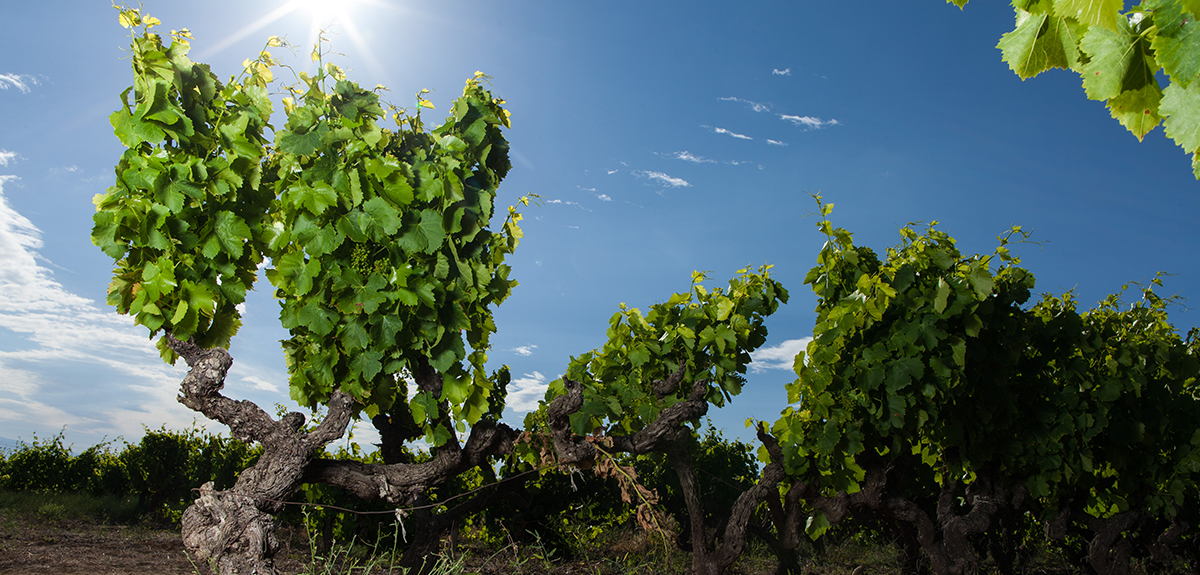
An ideal climate for wine-growing.
The Mistral:
The Mistral’s strength is highly visible within the landscape: trees bowing-over, Cyprus hedges arranged to protect living areas, houses with no openings to the north …
Despite all this, the Mistral undeniably has several benefits for wine-growing – it drains the soils, guaranteeing a Mediterranean climate for most of the year, it limits vineyard diseases by reducing humidity, it gives grapes a larger sugar content, it dries grapes after the rain, it protects them from the frost …. Many harvests could have been lost if the Mistral had not been blowing after some of the storms which hit during the month of September.
Hours of Sunshine:
2800 hours per year. One of the highest in France (Corsica not included) and much higher that the Bordeaux region (less than 2100 hours) and Burgundy (less than 2000 hours).
Rain:
The Châteauneuf-du-Pape region is the driest part of the Vaucluse (620 mm on average against 760 mm in Orange which is only 20 km away).
So the climate is perfect for wine as long as the sometimes-violent rain doesn’t fall during harvest time in September and October.
Soils:
The purely natural diversity of soils is explanation enough for the wines complexity: limestone from marine or alluvial deposit, sandy soils (on the banks of the Rhône), calcareous soils (hard and dry or soft and marly) or even alluvial clay soils … just a short list of the varied soil types present in the region.
Some extreme phenomena in recent years:
- 2017: Coulure on the grenaches (poor flowering).
- 2018: Unprecedented attack of mildew.
- 2021: Frost on the night of April 7th.
- 2022: Very little rain between December and May.
- 2023: Very little rain between December and June.
The vintner's job is complicated!

